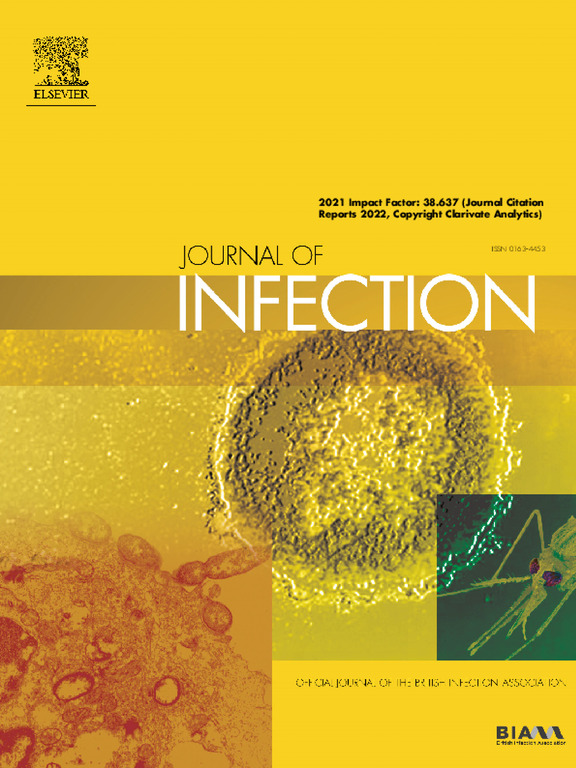A non-randomized pragmatic historically controlled trial evaluating the effectiveness and safety of a bedaquiline or a linezolid-based short regimen for rifampicin-resistant tuberculosis
IF 14.3
1区 医学
Q1 INFECTIOUS DISEASES
引用次数: 0
Abstract
Background
Short all-oral regimens for Rifampicin-resistant tuberculosis (ShORRT) have been a turning point in the treatment of drug-resistant tuberculosis. Despite this, access to drugs, stockouts, or adverse effects may limit the use of the recommended regimens.
Methods
Pragmatic non-randomized trial evaluating the efficacy and safety of a ShORRT strategy for the treatment of rifampicin-resistant Tuberculosis (RR-TB) at the Hospital Nossa Senhora da Paz (Angola). The strategy assigned participants to receive a bedaquiline (BDQ) or a linezolid-based (LZF) regimen supplemented with levofloxacin, clofazimine, and cycloserine for up to 9 months.
Results
One hundred and twenty-one participants with pulmonary RR-TB were treated with the ShORRT strategy; 69 received the bedaquiline- and 52 the linezolid-based regimen. Overall, 98 (81%) participants had successful treatment outcomes, which was significantly higher compared to a 20-month historical injectable-based regimen (successful outcome rate including cure and treatment completed: 53.7%) (p < 0.001). No significant differences between treatment success rates (85.5% vs. 75.0%), treatment failure (0.0% vs. 1.9%), death (5.8% vs. 13.5%), or lost to follow-up (LTFU) (8.7% vs. 9.6%) were seen between the BDQ and the LZF-based regimen. Globally, 72 adverse events (AE) occurred in 36 (29.7%) participants. Eighteen (14.9%) of these were grade ≥3 and were more frequently observed in those receiving the LZD-based regimen (p = 0.02).
Conclusion
The ShORRT strategy with a nine-month BDQ- or LZD-based regimen supports the efficacy of shorter all-oral regimens for the treatment of RR-TB and presents real-world data from schemes without bedaquiline, nitroimidazole, or injectables.
一项非随机实用历史对照试验,评估了贝达喹啉或利奈唑胺短期疗法治疗耐利福平结核病的有效性和安全性。
背景:治疗耐利福平结核病的全口服短程疗法(ShORRT)是耐药结核病治疗的一个转折点。尽管如此,药物的获取、缺货或不良反应可能会限制推荐方案的使用:方法:在安哥拉帕斯圣母医院(Hospital Nossa Senhora da Paz)开展务实的非随机试验,评估ShORRT策略治疗耐利福平结核病(RR-TB)的有效性和安全性。该策略分配参与者接受贝达喹啉(BDQ)或利奈唑烷(LZF)为基础并辅以左氧氟沙星、氯法齐明和环丝氨酸的治疗方案,疗程长达9个月:121名肺部RR-TB患者接受了ShORRT疗法,其中69人接受了贝达喹啉疗法,52人接受了利奈唑胺疗法。总体而言,98 名参与者(81%)获得了成功的治疗结果,与以往为期 20 个月的注射疗法相比,成功率显著提高(成功率包括治愈率和治疗完成率:53.7%)(p < 0.001)。在治疗成功率(85.5% vs. 75.0%)、治疗失败率(0.0% vs. 1.9%)、死亡率(5.8% vs. 13.5%)或失去随访(LTFU)率(8.7% vs. 9.6%)方面,BDQ疗法与LZF疗法之间无明显差异。在全球范围内,有36名参与者(29.7%)发生了72起不良事件(AE)。其中18例(14.9%)为≥3级,在接受LZD方案的患者中发生率更高(P =0.02):采用为期 9 个月的 BDQ 或 LZD 方案的 ShORRT 策略支持缩短全口服方案治疗 RR-TB 的疗效,并提供了不使用贝达喹啉、硝基咪唑或注射剂的方案的实际数据。
本文章由计算机程序翻译,如有差异,请以英文原文为准。
求助全文
约1分钟内获得全文
求助全文
来源期刊

Journal of Infection
医学-传染病学
CiteScore
45.90
自引率
3.20%
发文量
475
审稿时长
16 days
期刊介绍:
The Journal of Infection publishes original papers on all aspects of infection - clinical, microbiological and epidemiological. The Journal seeks to bring together knowledge from all specialties involved in infection research and clinical practice, and present the best work in the ever-changing field of infection.
Each issue brings you Editorials that describe current or controversial topics of interest, high quality Reviews to keep you in touch with the latest developments in specific fields of interest, an Epidemiology section reporting studies in the hospital and the general community, and a lively correspondence section.
 求助内容:
求助内容: 应助结果提醒方式:
应助结果提醒方式:


